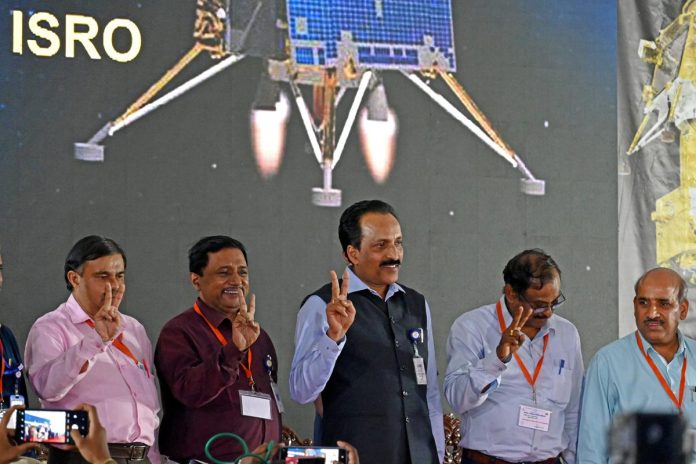New Delhi: The Indian Space Research Organisation (ISRO) has completed plans for its own space station, the Bharatiya Antariksha Station (BAS), and will soon seek government approval, according to ISRO chairman S. Somanath at a press briefing in New Delhi.
Additionally, plans for Chandrayaan-4, India’s next lunar mission involving a crucial space docking station, and the Next Generation Launch Vehicle (NGLV), which will replace the current Launch Vehicle Mark III (LVM3), are also awaiting approval.
“We’ve defined the nature of India’s space station and the configuration of the NGLV. Chandrayaan-4’s configuration, including how to bring samples back from the moon, has been worked out. We need docking capability in both Earth and lunar orbits, for which the Spadex mission will conduct a trial launch this year. This will be implemented in Chandrayaan-4, with a project report ready for government approval,” Somanath said at the Indian Space Congress 2024.
A detailed report on the NGLV, covering its design, configuration, architecture, production, and cost, is also ready for government review, Somanath added.
On August 24, under Somanath’s leadership, ISRO successfully landed Chandrayaan-3 on the lunar south pole, making India the fourth country to land on the moon and the first to land on the moon’s dark side.
Set for a 2028 launch, Chandrayaan-4 aims to return lunar soil samples to Earth and will be key to the Gaganyaan mission, which aims to land an Indian on the moon by 2040.
“We have finalized the first configuration of BAS, which can be launched using LVM3, our heaviest rocket. The first launch is planned for 2028, with the first module of BAS already engineered. A proposal detailing the technologies, timeline, and cost of building BAS is ready,” Somanath stated.
Due to insufficient current facilities, ISRO has requested approval for a new, heavier launch complex for NGLV, weighing nearly 4,000 tonnes, Somanath said.
ISRO’s commercial arm, NewSpace India Ltd (Nsil), signed a partnership with the Australian government, which will invest $18 million in Indian space projects. The first mission under this partnership is an $8.5 million satellite launch contract for Australian firm Space Machines, set for 2026 using ISRO’s Small Satellite Launch Vehicle (SSLV).
While this partnership indicates external demand, internal demand remains low. Challenges in the funding procedure for space launches in India could stifle private sector demand.
“Demand will come from the communications segment, which builds big satellites. In-Space said we need to find orbital slots and frequencies for industry use. This will be the first step,” Somanath added.
ISRO and In-Space will collaborate with the government and strategic entities to build a low-earth orbit (LEO) earth observation satellite constellation to boost internal demand.
“There are significant possibilities in applications like space timings and the fusion of earth observations. Companies like Galaxeye are creating internal possibilities for satellite manufacturing in India,” Somanath said.
“Our goal is to make India a hub for satellite manufacturing and launch capabilities. Building launchers in numbers is possible in India, but the challenge is whether to build and wait or build after satellites are available,” he explained.
India’s space sector was privatized in 2020, leading to the development of many space startups and launch vehicles. Experts predict that within five years, India may have over 80 small rockets, including the SSLV and private rockets from companies like Skyroot Aerospace and Agnikul Cosmos, ready for annual launches.
To meet this supply, domestic demand is crucial. Pawan Goenka, chairman of In-Space, said that the Centre is considering steps to build demand, but scaling up will depend on the commercial potential of satellites and satellite services in the coming years.

